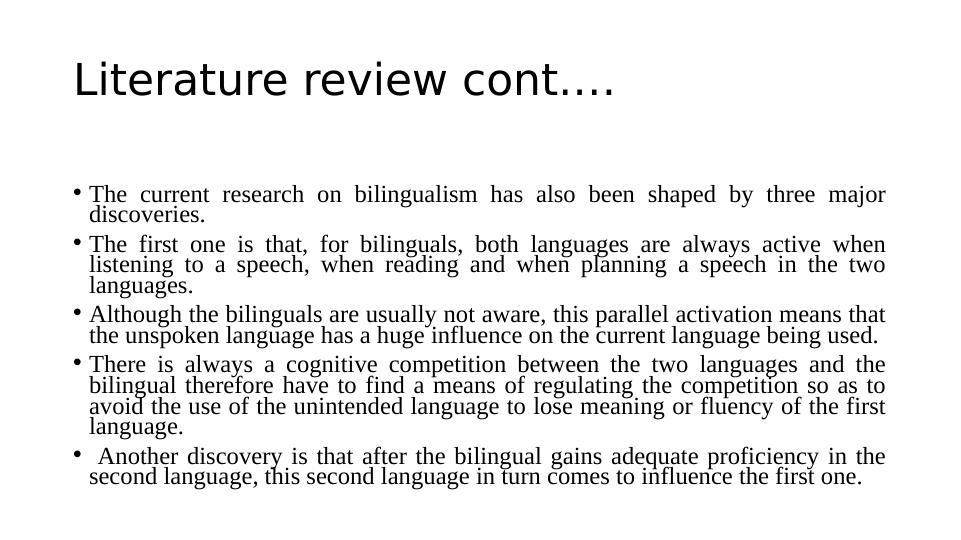Bilingualism: Benefits and Challenges
Hypothetical questions, survey question, and an overview presentation on language contact, language maintenance, and language shift using domain analysis.
11 Pages1085 Words70 Views
Added on 2022-12-22
About This Document
This presentation explores the benefits and challenges of bilingualism, including its impact on language acquisition and cognitive development. It discusses the similarities and differences between monolingual and bilingual language acquisition, as well as the effects of using two languages simultaneously. The presentation also covers code switching and the advantages of being biliterate, such as increased educational opportunities and cultural diversity.
Bilingualism: Benefits and Challenges
Hypothetical questions, survey question, and an overview presentation on language contact, language maintenance, and language shift using domain analysis.
Added on 2022-12-22
ShareRelated Documents
End of preview
Want to access all the pages? Upload your documents or become a member.
Individual Bilingualism Article 2022
|12
|3425
|24
Assignment on Speech and Language Development
|6
|1481
|11
Cross-Linguistic Comparison Language Acquisition
|6
|1460
|17
Challenges Faced by Bilingual Children with Speech Delay and Selective Mutism: Insights and Recommendations
|11
|2860
|265
Second Language Acquisition Report (Doc)
|14
|3571
|93
Differences in Inhibitory Control Ability among Monolinguals and Bilinguals
|14
|4015
|98




